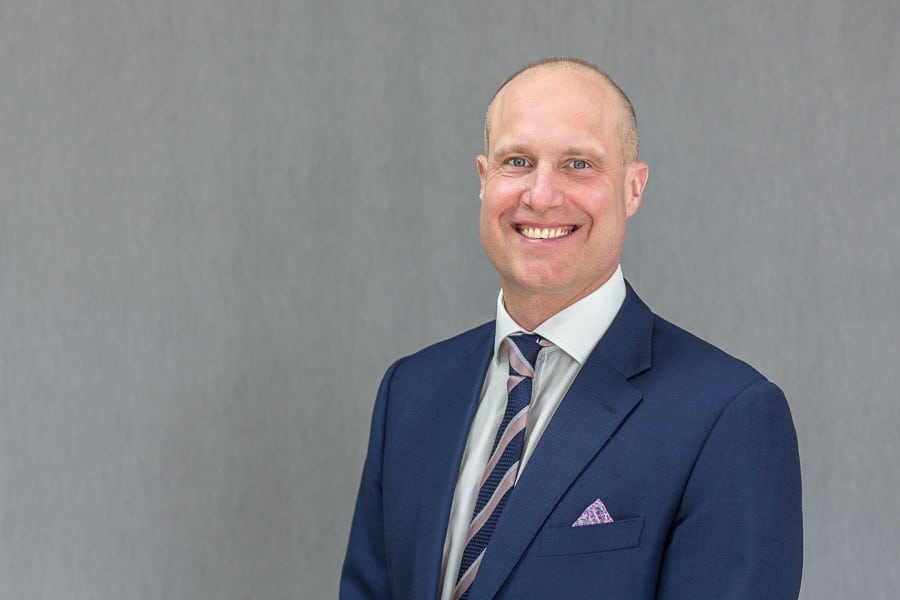
Professor Carey Smith is an orthopaedic surgeon, with a sub-speciality interest in orthopaedic oncology, metastatic bone disease and complex limb reconstruction. He is also the Head of the State Sarcoma Service. This is Professor Carey Smith’s story, as a clinician in the cancer care space.
As an Orthopaedic and Oncology surgeon, about half to two-thirds of my time is spent on cancer and cancer-related diseases. Most of the cancers that I work with are considered rare. While these cancers are rare individually, in terms of the number of people diagnosed with them, when put together as a group, rare cancers account for one third of all cancers. Adding to this, we live in a geographically large State that houses a sparse population, so ensuring early referral to appropriate specialists is more important. A decade ago, with support from the Director General for Health, we centralised the State Sarcoma Service, improving early access to specialised care for patients, reducing costs for the State, with a fundamental aim of improving outcomes for patients and there families. Carefully measuring outcomes means that our success rates are at least as good as internationally published results from large centres of excellence. A centralised service also allows us to collaborate more with oncologists and specialists around Australia.
So, what does a centralised State Sarcoma Service mean for patients? It means that they get access to an interdisciplinary co-located team who can see both adult and paediatric clients, all working together for the good of the patient. Physicians, Surgeons, Physios, Nurses, and Clinical staff are all experts with knowledge informed by recency. Patients don’t want to be special, or rare. They want outstanding care, informed by best practice, and delivered by expert clinicians. The clinical team sees a high volume of patients and are supported by a database manager who records outcomes, as audit underpins good clinical practice. From a State perspective, we are able to demand cost savings due to the size of the Service, we have access to cutting-edge, latest technology prostheses which we use on a daily basis and we are publishing regularly, contributing to the global narrative on these diseases. Our published work improves the outcomes for people navigating the rare cancer journey, which is so important because furthering the understanding of rare cancers is difficult but essential. These are just some of the benefits to patients and to the State more broadly, and these are a few of the differences a centralised service can deliver.
Based on my experience running the State Sarcoma Service, I can see a lot of positives for the development of a Comprehensive Cancer Centre for WA. One of the exciting things for this Centre is the bringing together of all the ‘hidden’ people in the background who work their magic and smooth the cancer pathway for patients. By ‘hidden people’ I mean the database managers, support workers, nurse specialist, all the people who make the journey more efficient and less time intensive for the patients, thereby making it more manageable. I’m also excited by the opportunity for additional nursing staff this Centre will offer. The adult population is not currently well-serviced by an adequate number of nurses. Nurses are essential because they attend patient meetings, advocate for patients and really run the hospitals.
The other big gain for a Centre such as this is in the research space. While we may not locally be running a research project on a particular rare cancer, the Centre will have the administrative support to look at what is being researched nationally and internationally and how projects outside of WA might have findings relevant to us or how our patients might be able to participate in these projects, thus improving outcomes.
I’m also excited about the opportunities for knowledge transfer and cross pollination of ideas that will come from incidental meetings that are only possible with co-located clinicians. Not having to schedule in these meetings improves workflow and efficiencies plus there are better outcomes for patients. Building on the concept of co-location and local knowledge transfer, the WA Comprehensive Cancer Centre offers the opportunity to develop this incredible interdisciplinary network of specialist centres across the country.
One of the things I would like to see are State and National networks getting together to discuss patients and conditions. While Ewing’s Sarcoma, for example, affects only 1 in a million people, it predominantly affects children and young adults. If we can get a national multidisciplinary meeting running, we could collaborate internationally with future trials on cancers such as Ewing’s Sarcoma, swapping information, registering patients for clinical trials, like the Euro Ewing Studies, which slowly but surely will deliver game-changing treatment options for our patients.
Bringing people together is when amazing things happen. On a personal note, my mother was diagnosed with, and eventually passed away from, Ovarian Cancer. She was treated rather poorly through her cancer journey, however one of the highlights for her on the endless trips to the hospital was to see her league of friends and having someone to talk to. The benefits of organisations like Solaris and Sock it to Sarcoma who give patients a voice and bring people together is immense. This is where comprehensive cancer centres really punch above the goal of delivering clinical care. Fundamentally, patients are people, clinicians, nurses, researchers, academics, health care professionals, we are all people. And, when we are together, people do better.
